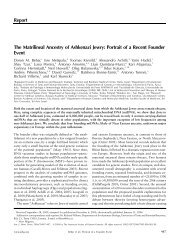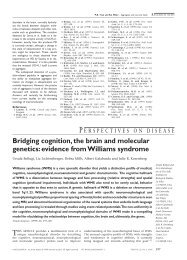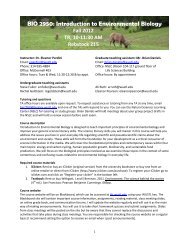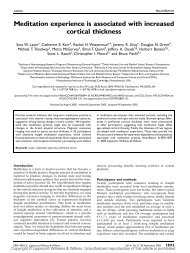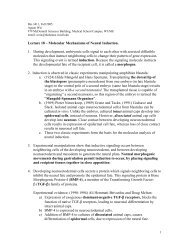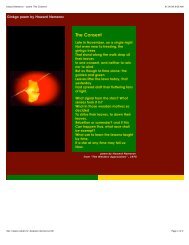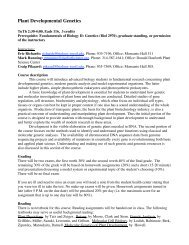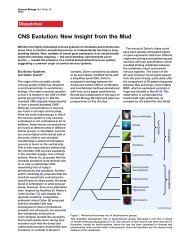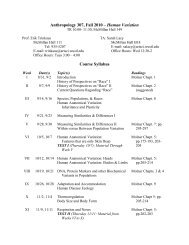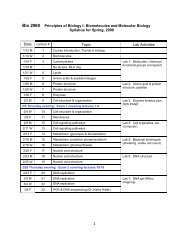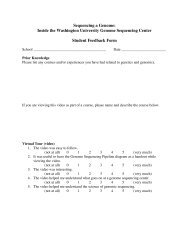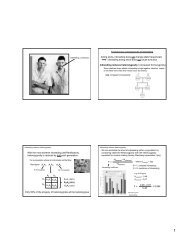BLAST Exercise: Detecting and Interpreting Genetic Homology
BLAST Exercise: Detecting and Interpreting Genetic Homology
BLAST Exercise: Detecting and Interpreting Genetic Homology
Create successful ePaper yourself
Turn your PDF publications into a flip-book with our unique Google optimized e-Paper software.
this line of reasoning. For example, two unrelated sequences might appear similar purely by<br />
chance. Alternatively, a pair of sequences may be conserved homologs, but they may have<br />
diverged only recently (as in human <strong>and</strong> chimpanzee), so that conservation implies nothing about<br />
whether they are under negative selection. Finally, a pair of sequences may indeed be conserved<br />
homologs because of strong negative selection, yet have different functions. For example,<br />
consider the crystalline gene family, in which almost identical proteins serve both structural <strong>and</strong><br />
enzymatic roles, or the Adh1 <strong>and</strong> Adh2 genes of yeast, which are closely related but implement<br />
opposite enzymatic functions. While <strong>BLAST</strong> is a powerful tool for detecting similarity, we must<br />
also underst<strong>and</strong> its inherent limitations to properly interpret its results.<br />
Overview of the Annotation Process:<br />
The main goal of this lab is to identify interesting features (functional genes or non-functional<br />
pseudogenes) within a piece of the D. melanogaster genome. We will use the programs <strong>BLAST</strong><br />
<strong>and</strong> RepeatMasker to help us with the annotation. During the course of our investigation, we<br />
will also learn how to adjust some of the parameters in <strong>BLAST</strong> <strong>and</strong> in RepeatMasker to increase<br />
the sensitivity <strong>and</strong> specificity of our searches.<br />
Much of this lab consists of questions, which you should try to answer as you work through this<br />
tutorial. You should also make note of the exact <strong>BLAST</strong> <strong>and</strong> RepeatMasker parameters <strong>and</strong> the<br />
databases that you use for your searches, to ensure that your results are reproducible.<br />
You can find additional information on how to use <strong>BLAST</strong> at the NCBI website<br />
(http://www.ncbi.nlm.nih.gov/blast/producttable.shtml).<br />
Finding Interspersed Repeats:<br />
The file dmel_seq1.fasta contains a FASTA-formatted DNA sequence, which represents roughly<br />
4000 bases from chromosome X of D. melanogaster.<br />
Before we attempt to search for genes in our 4 kb sequence, we should first annotate its repetitive<br />
elements using RepeatMasker. RepeatMasker is a program that identifies transposable elements<br />
<strong>and</strong> low complexity repeats in anonymous DNA sequence. You can run the RepeatMasker<br />
analysis at the RepeatMasker web server. Alternatively, the RepeatMasker analysis of our<br />
sequence is available in the tutorial package (files within the DmelSeq1_RpM directory).<br />
Open the file lab1seq1.fna in a text editor (for example, most Macs would use TextEdit <strong>and</strong><br />
many PCs would use Notepad). Copy the sequence onto the clipboard. Go to the RepeatMasker<br />
web server <strong>and</strong> paste the sequence into the “Sequence” text box.<br />
2



